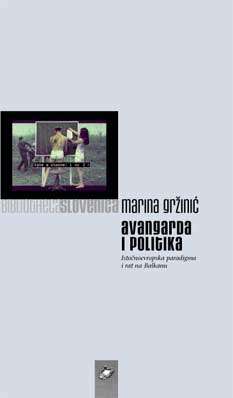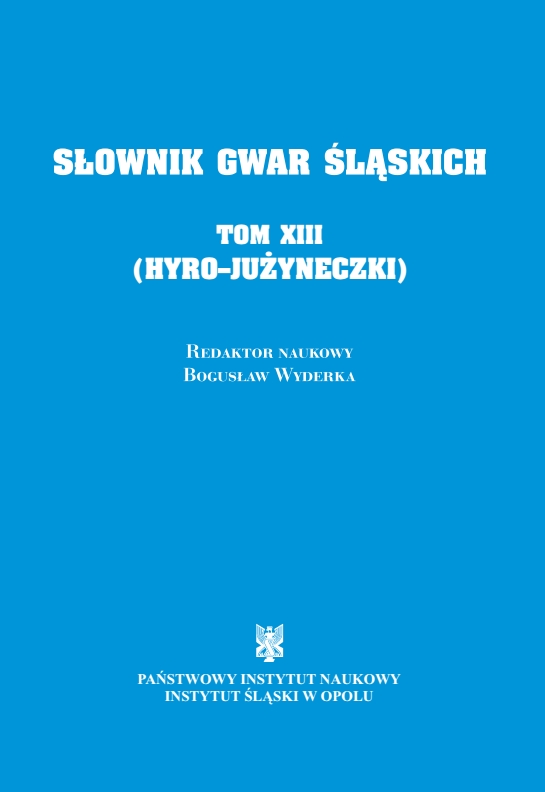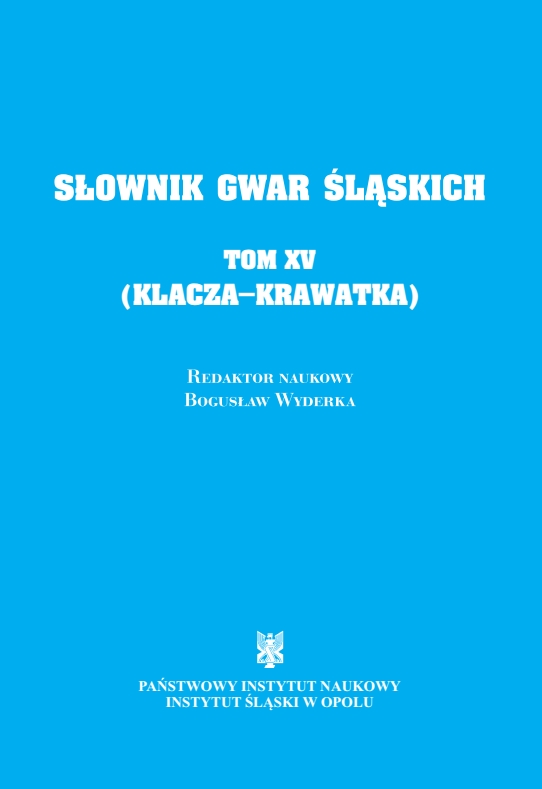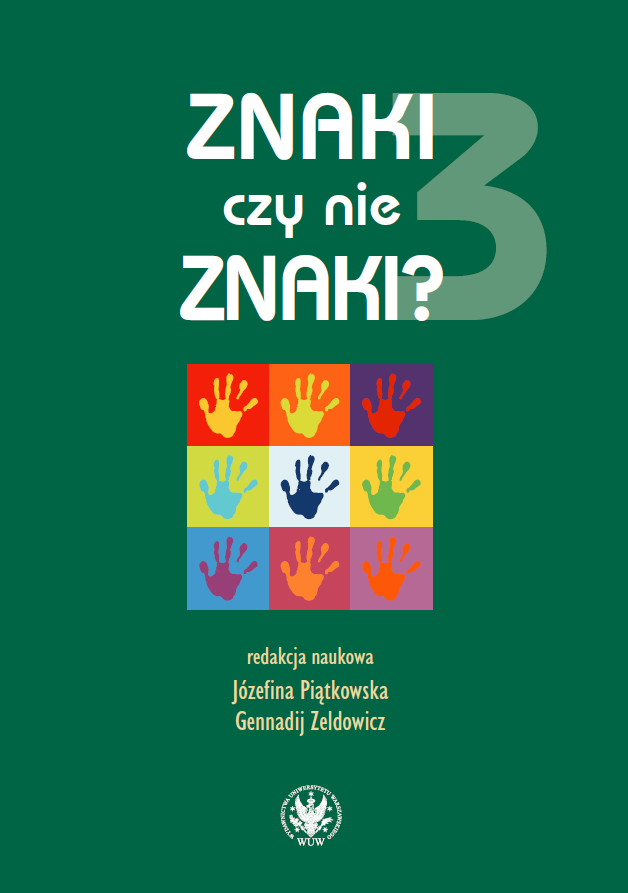
Avangarda i politika
One always searches for some symbolic point from which one can claim that something ended and something else began, even though there are no beginnings and no endings.
More...We kindly inform you that, as long as the subject affiliation of our 300.000+ articles is in progress, you might get unsufficient or no results on your third level or second level search. In this case, please broaden your search criteria.

One always searches for some symbolic point from which one can claim that something ended and something else began, even though there are no beginnings and no endings.
More...
This book includes works that were written, or especially for this publication expanded, revised or translated, during the past two years; the only exception is an obituary of much earlier origin which appears as Chapter 9. Details on the sources and of earlier publications of the works included, of which several were conference presentations, are given in the bibliographical notes at the end of the book.Composed of four sections, the content and structure of this book follow the model that is represented in the author’s previous books published by Biblioteka XX vek. The first section contains four works dealing with topics of contemporary European language policy, with an accent on the protection of minority languages, multiligualism and multiculturalism, as well as on the relation between language and national belonging. Which the author has been engaged with over the last decade as an expert consultant to the Council of Europe for the charter on regional and minority languages. This document is presented in detail in the introductory chapter, and is thematically engaged in the following four chapters. The title of the book refers to the challenges faced by many minority languages which struggle to survive under a shared European roof, while they are confined to the attic, while spacious rooms are occupied by the more widely used languages – among them English, the spread of which is discussed in the fifth chapter. This section ends with an essay on the idea of tradition, especially in linguistics.The second section of the book comprises four chapters on the Serbian language: the first on its identity, and the remaining three on multilingual portmanteaus (slivenice) and slang terms, material which the author has followed and researched for over twenty years, reporting his findings in a series of books in this edition; these chapters represent, thus, a continuation of earlier research. The third section carries three obituaries dedicated to distinguished interpreters of linguistic phenomena, especially in their social context, as well as three recent interviews on various linguistic themes. Finally, the fourth section offers a continuation of the author’s sociolinguistic bibliography of Serbia, concentrating on the period from the middle of 2014 to the end of 2015 (with added material from earlier years).Belgrade, February 2016
More...
It is by now a tradition that the intellectual efforts of the participants at the Early Fall School in Semiotics (EFSS), organized annually by the Southeast Center for Semiotic Studies (SEECSS) at the New Bulgarian University, result in a collection of selected papers. The present volume in English and French is an outcome of the XIIth edition of the EFSS on "Semiotics, Image and Narration", held in 2006 in the town of Sozopol. It is formally divided into two parts, containing texts by 'guest lecturers' from our partner Universities in Finland, Italy and USA, as well as by 'local participants' - professors and students at the New Bulgarian University. From parchments to paper and from print to the internet, "the story of humankind has been written, and will be written upon its virtual walls" (Albertson, 1997). In the new millennium we are ever more surrounded by bulletin boards and computer networks, from advertisement banners to cyberspace. Nowadays humankind learns by watching rather than by reading or being lectured to. In order to be considered literate in the information age, the new literate person needs to be media literate as well as being proficient in literature and arithmetic.
More...
"Glossary of Silesian Dialects" is the result of many years of scientific work of several generations of linguists from the Silesian Institute in Opole, Poland.
More...
"Glossary of Silesian Dialects" is the result of many years of scientific work of several generations of linguists from the Silesian Institute in Opole, Poland.
More...
"Glossary of Silesian Dialects" is the result of many years of scientific work of several generations of linguists from the Silesian Institute in Opole, Poland.
More...
"Glossary of Silesian Dialects" is the result of many years of scientific work of several generations of linguists from the Silesian Institute in Opole, Poland.
More...
"Glossary of Silesian Dialects" is the result of many years of scientific work of several generations of linguists from the Silesian Institute in Opole, Poland.
More...
У монографії висвітлюються історичні передумови виникнення, становленнята розвитку сучасної військової символіки, узагальнюється діяльність органівдержавного та військового управління України щодо розробки, впровадження таправового утвердження військової символіки у період 1991 – 2012 рр.
More...
The book is divided into three parts, according to the following contexts: I) Linguistic and Cognitive, II) Theoretical and Literary-Historical, III) Anthropological and Cultural.
More...
The publication contains two texts by Jan Mukařovský, translated by a bohemist Aneta Daszuta, concerning the sign character of art. (including literature as the art. Of words). It shows the importance of the semiological reorientation, which took place in the 1930s and was mainly caused by Jan Mukařovský, for the history and development of the Prague school of structuralism.
More...
The book shows contemporary trends in research on the structure and semantics of lyric works. The authors attempt to answer the question how poems generate significant meanings. The presented texts are characterised by the accuracy proper to linguistics as well as by the comprehensive literary approach to the analysed works and discussed research problems.
More...
The book "Pejzaże miasta w komiksie. Studia nad komiksem" focuses on the study of comics, where the main motif becomes the analysis of urban space. The city is a research track, but also a pretext for addressing the issues of the functioning of comics, its structure and components. The author starts with an overview of the state of comics studies. Another important part of the monograph is the preparation of tools and methods which are important in the study and analysis of comics. The book constructs and describes the research methodology, including its new elements. The final part of the work, in turn, offers examples of comics analysis in the light of the study of urban space, also employing the developed tools. The adopted research perspective allows to use the methods developed in this book to study also other, not only urban, tropes and themes in comics.
More...
The monograph deals with the problems of radio acting and radio directing. Both of these components are interrelated, in theory reflecting their creative role in the origin of radio drama. The research is focussed on the work of two important Czech radio directors: Jiří Horčička and Josef Melč and their best achievements dating back to the seventies and eighties twenties of the 20th century. Its methodology is based on the structuralist theory of Jiří Veltruský, whose structural and semiotic theory is applied to radio theory. Apart from Veltruský, the research is also grounded on the basic monographs by Czech radio theoreticians, in the first place on the publications by Jan Czech and Alena Štěrbová, and also on the theory of radio dramatization of fiction by Jan Lopatka.
More...
The epoch in which we live is also full of communicatively difficult situations, resulting from the pace of civilisational changes, cultural and social conflicts, growing divides related to opening to the Other, with whom we are not always prepared to meet. The works and studies compiled in the present book are divided into four parts and the problems described in them focus on many communicative situations and social phenomena. The authors point the language spheres, but also many different contexts of using the natural code, such as politics, racism, gender, sexual orientation, religion, sport, disease and national or cultural difference.
More...
This handbook aims at introducing the students of French philology and French applied to economics to French and general linguistics. That's why it focuses on the main fields of linguistics: phonetics, morphology, syntax, semantics, etc., but also on topics permit to have an overview of the problems of the science of language, like the notion of sign, the classification of languages or the communication. This book proposes numerous excercices after almost each chapter, so the students have the opportunity to train with the different points which are mentioned. The handbook is written in French and gets the students familiarized with the grammatical terminology.
More...
Artanuji, the oldest city of Klarjeti, historical Georgia, is within the boundaries of Turkey on the grounds of Kars Treaty (1921). According to the data, gathered through the fieldwork in 2010‒2014, ethnic Georgians were exiled from Artanuji after the World War II. The article deals with the written sources and field data, providing detailed information about the Artanuji population, ethnic Christian Georgians as well as Muslim Georgians. The historical past in this region reminds of itself through the toponyms that appeared in the places of historical Georgia and through the speech of population and covers the history of the ethnic groups. The toponyms attested on the territory of historical Georgia have a great importance for they shed light on a certain period of history and are the only witnesses of Georgian settlement here.
More...
The article briefly evaluates the vast literature relating to the worship of St. George in Georgia and draws on the ethnographic data collected by the author in the years 1977 to 1987. It explores the worship of St George in the Caucasus Georgia both in the past and present. Consequently, it discusses such categories as religious practice, belonging to the parish and territory, identity and, sharing holy places, epithets of the Saint, hybrid cults, etc. The materials used are: written historical sources, ethnographic data attested in the writings of Christian Missionaries (Christopher Castelli, Jean Chardin, Arcangelo Lamberti, etc.), the ethnographic data gathered (during 2018-19) among Internally displaced persons, and contemporary emic and etic researches undertaken by anthropologists of the 20th and 21st centuries. The argument of the present contribution is based upon a series of ethnographic observances that present traditional feasts of the saint and their transformations in the light of current political processes. Accordingly, detailed ethnographic field data and observations are contextualized in time and space, using the explorations and studies of anthropologists and historians. The article tries to show how once traditional Christian site (lieux de mémoire in Pierre Nora’s sense) with its real environment and with is firm identity is deterritorialized and transformed into a shared place of mixed and ambiguous pilgrimage place through the political processes and hybridization.
More...
Georgian everyday life is highly tied up with the rich religious traditions that have been developed as a result of the centuries-long synthesis of pre-Christian and Christian practices and worldviews. The Soviet period caused the fragmentation of the traditional religious knowledge and the practice moved to the household level and was paganized. In the post-Soviet period, the burst of religious sentiments and search for identity increased the involvement of big masses to religious practices. The transformations were accompanied by a process of individualization of religion, which has led to a change of forms of religiosity. Based on the ethnographic data of East Georgia, the article discusses the correlation of the normative, vernacular and resistant forms of religiosity. Historical-comparative and parallel analyses are used to research two examples of religious practice: Lomisoba and Berikaoba. Lomisoba is analyzed as an example of hybrid, massive, collective holiday. Berikaoba is more local, not connected to a sacred site, performative festival. It is argued that the contemporary processes are having an impact on the religiosity and the religiosity of certain groups is trying to be defined in new forms. All the old and new forms of religiosity are explicitly displayed and played out in contemporary Georgia. At the same time there are some hidden, or rather implicit practices.
More...
The article introduces to the late medieval romance in verse Vepkhistq’aosani by Shota Rustaveli – the central artefact in Georgian cultural self-awareness and the top item of ‘high’ Georgian cultural export. It briefly presents its narrative content, indicating the correlation of two plot-lines (initially through enframing, after some point though horizontal interlacing). It briefly introduces to the main fluctuations and 20th-century tendency in translating the work’s title, interpreting the fluctuations as indicative of aesthetic differences, and the tendency as an indication of the ‘cultural market’ success of the Soviet-Georgian (in its ideological and aesthetical basis –a Stalinist and socialist-realist) image of Rustaveli’s masterpiece. It presents two influential to dominant claims of Georgian Rustvelology – that the work is a poema (and not a novel/romance) and that it displays, at least partially, Renaissance outlook and poetics, – considering these claims as tools (1) of Soviet “Culture Two” to allot a proper place to Georgian nation within the alternative modernity of the USSR and its premodern background-under-construction, and (2) of Soviet-Georgian cultural nationalism to define a usable past in post-Soviet conditions; and (3) as beliefs. It revitalises the option to contextualise the work of Rustaveli (and, indirectly, Georgian cultural identity) in non-Eurocentric terms, providing some factographic and theoretic clues from the field of macrohistory (J. Abu-Lughod et al.) and a methodological one from sociology of arts (P. Bourdieu).
More...